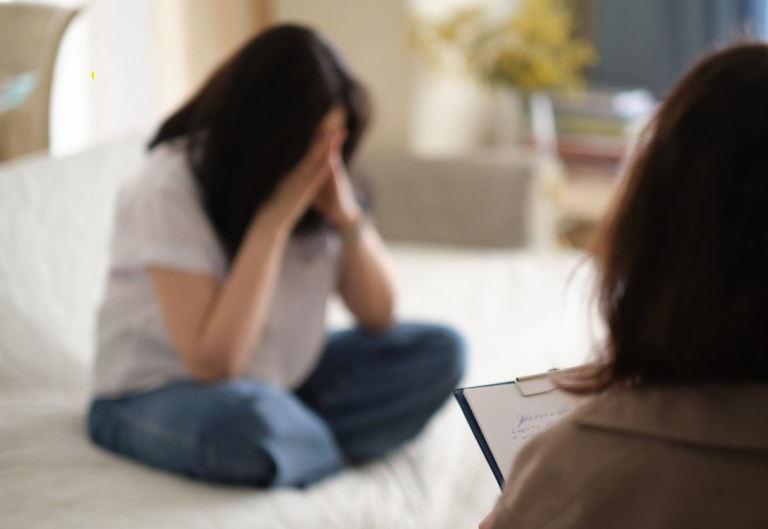According to the Office on Women’s Health, abuse, whether physical, emotional, verbal, or sexual, can have long-term effects on mental health impacting self-esteem and relationships. Women who have gone through abuse or other trauma have a higher risk of developing a mental health condition, such as depression, anxiety, or post-traumatic stress disorder (PTSD). It is possible to heal the physical, mental, and emotional scars of trauma and abuse.
Canine Assisted Therapy
Connecting with a dog can be powerfully healing and comforting for individuals of all ages and walks of life. In some cases, it can help an otherwise “stuck” patient overcome hurdles in treatment and begin making progress again.

New Study Reveals that Therapy Dogs Help Improve Mental Health
New study focused on veterans’ mental health demonstrates that therapy dogs used in conjunction with traditional therapies improves treatment outcomes.

It’s Okay to Talk About It!
Good mental health promotes a positive self-image and leads to more fulfilling relationships. Having good mental health generates good decision making and life’s challenges become more doable.

The many mental health benefits of therapy pets
Most people love dogs, and there’s many good reasons for that. Whether you own a dog or just love the idea of a dog, there are many psychological benefits associated with having a canine companion in your life. Numerous research studies help to point out that dogs improve their human companion’s mental and emotional and physical health in some surprising ways, and at every stage of our lives.


 "New research supports the notion that interacting with animals actually does decrease levels of cortisol (a stress-related hormone) while helping to lower blood pressure. Other studies have validated what pet owners all over the world intuitively understand; that interacting with animals can reduce loneliness, increase feelings of social support, and boost a person's mood.
"New research supports the notion that interacting with animals actually does decrease levels of cortisol (a stress-related hormone) while helping to lower blood pressure. Other studies have validated what pet owners all over the world intuitively understand; that interacting with animals can reduce loneliness, increase feelings of social support, and boost a person's mood.